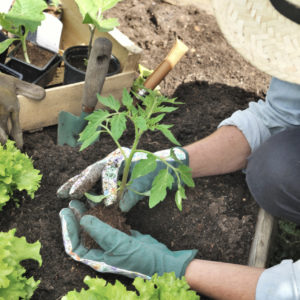How to choose the best seeds, transplants for vegetable gardens
Successfully growing vegetables also depends on region, season
Whether selecting seeds to plant in your vegetable garden or picking out perfect, healthy transplants, Texas A&M AgriLife Extension Service horticulture experts can offer all the information you need to be well on your way to a bountiful harvest.
Knowing what vegetables will flourish in your area is key to a successful garden. AgriLife Extension agents throughout the state can help determine what vegetables should grow best in your region and what varieties to look for when visiting your local garden center.
Or take a look at the AgriLife Extension Vegetable Variety Selector. By entering your county or region, the Vegetable Variety Selector can offer some insights and options for your particular location.
The next big question will be whether you want to start your garden from seed or use vegetable transplants.
Choosing to start from seed
Once your vegetable selections have been made, head to your local garden center to view all the available seeds. Most vegetables are divided into warm- and cool-season varieties, explained AgriLife Extension horticulture specialist Lisa Whittlesey, Bryan-College Station.
“Cool-season vegetables are things like spinach, loose-leaf lettuces, broccoli and cauliflower and tend to thrive in the cooler months of the year,” she said, “While our warm-season vegetables are things like summer squashes, zucchinis, tomatoes and corn that tend to do better during our warmer months.
“If you are planting a fall garden, there are many cool-season vegetables that do great starting from seed including carrots, beets, lettuce, spinach and many healthy greens including turnips and swiss chard.”
Once you know what season you will be planting in, the selection becomes fairly easy. View the information on the back of the seed packet for planting depth, spacing of seeds and germination time.
“That’s important information so that when you check your garden every day you will know when the plants will be up and ready to grow,” she said.
Picking vegetable transplants
Choosing a healthy vegetable transplant can insure a healthy plant later and the opportunity for a full harvest from your garden.
“When choosing your transplants, look for a healthy, stalky plant,” said Jayla Fry, Texas Master Gardener program coordinator, Bryan-College Station. “Avoid plants that are spindly or stretched, because they likely haven’t had enough sun.
“Make sure to look for diseased leaves or bugs, and even check the underside of the leaves. Also, feel the soil to make sure it has been properly watered.”
Checking for these few things will help you to have a healthy plant and a good harvest by the end of the season.
For tips and tricks on growing individual vegetables, visit the Easy Gardening Series, or view the information on planting vegetables to get more specifics on seeding and transplanting.
Learn more about choosing fertilizers, container gardening and starting your vegetable garden, from Texas A&M AgriLife experts online.



